How to Memorize Polyatomic Ions & Chemical Formulas
If you’re in the sciences, then, chances are, memorizing the polyatomic ions will be one of the more challenging memory tasks you will face during your academic career. Heck, you’re probably reading this the night before a major exam – just trying to figure out how to hack it. But in this article, I’m going to show you how I, a sociology major with no aptitude towards science whatsoever, can memorize them easily and quickly using 3 simple steps… and by the end of this article, you’ll have a neuroscientifically proven method for memorizing anything your teachers can throw at you.
Let’s face it, memorizing the polyatomic ions – or any other chemical formula – is hard. In fact, it’s so hard that 50% of the Wikipedia page for “polyatomic ions” is comprised of tips on how to memorize these confusing formulas! I bet you’ve never seen that before.
As an online instructor in accelerated learning, with over 150,000 students in every field of study imaginable, I get asked a LOT: Jonathan, how can I memorize scientific or mathematical formulas? But look, I’m not even going to lie. As a sociology major turned entrepreneur, I don’t even fully understand what the polyatomic ions are all about or why they matter. After all, I spend my time speaking, writing books, and teaching online courses about memory and learning… what do I care about chemical formulas?
Fortunately, with the right system for learning and memorizing them quickly and easily – that actually doesn’t even matter – and as you’ll find out, my complete novice status as a chemist didn’t stop me from being able to quickly and easily memorize the polyatomic ions in a lasting and memorable way.
Enter polyatomic ions
Here’s the thing: If you look at a lot of the videos, tips, and advice all over the web, it all offers you either a simple mnemonic about Nick The Baby Camel – which only helps you learn a few of the polyatomic ions, or another complicated schema for converting from the “ate” polyatomic ions to the other ones.
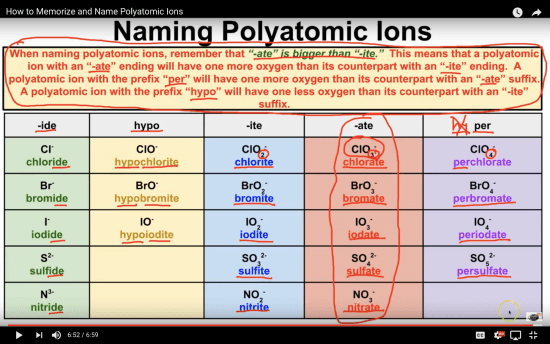
For example, if you add “per” to the front, you add one more oxygen to the “ate” form, or if you convert “ate” to “ite”, you have one LESS oxygen ion, and so on and so forth.
Now, I’m not going to stand here and tell you not to use these techniques, because, in reality, they can be really helpful in teaching you to convert the ions yourself. Plus, if you create visual mnemonics – like the kinds you’re going to learn about in this article – to remember those rules, they can really cut down on the amount of work you need to do.
The problem with these memorization tactics is that they depend on you first learning the basic “ate” ions, which you’d have to do with rote memorization… and even still, they do nothing to prevent you from forgetting a bunch of the “ate” versions, and therefore, forgetting entire groups of polyatomic ions.
What you need is a method that makes it quick and easy to at the very least memorize the “ate” polyatomic ions and their formulas, in order, so that you can be sure not to leave one of them out! Once you do that, you can either use the same system to memorize the “per”, “hypo”, “ite”, and so on versions of the polyatomic ions, or fall back on the “nomenclature” conversion tricks if you have to.
The power of visual memory
In order to memorize this stuff quickly and easily, we have to think out of the box, and instead rely on the incredible power of our visual memory. You see, the human brain has, in fact, evolved to memorize HUGE amounts of data… it just isn’t used to doing it in an auditory or text-based way. Think about it… your ancestors 100,000 years ago knew the name, medicinal value, and season of every plant and animal around them, and were able to memorize generations of rich tribal history. How’s this possible?
Well, if you want to improve your memory, you need to remember a few basic principles, first:
- Our brains are subject to something called “the picture superiority effect.” This means that even if you think you’re an auditory or tactile-kinesthetic learner, research has proven that in fact, your brain remembers pictures better than anything else.
- Our brains operate by something called Hebb’s Law, which states that neurons that fire together, wire together. In plain English, this means that connecting new information to information we already know makes it more memorable and relevant to your brain, which will place a higher priority on it
- And finally, our brains are insanely good at remembering locations. This is why the memory palace technique – a system of creating unique, memorable pictures and imaginarily placing them into real-world places that your brain already knows – is used by every single memory champion and world record holder. In fact, I recently put out a video explaining the exact neuroscience behind the memory palace, and how the heck it works SO incredibly well. You can watch it below:
The approach to memorize polyatomic ions
Now that we understand these 3 basic tenets of memory improvement, let’s try it out, by tackling some polyatomic ions.
As I go along, what I’m going to do is create a unique visual symbol for each polyatomic ion – that’s rule #1. These symbols will use interesting, bizarre, imagery to make it interesting and original for my brain – in fact, I might even choose to use violent or sexual imagery. Don’t worry – these images are just for you, and you don’t have to share them with anyone else.
As I do this, I’m going to be extra careful to connect these images to other pieces of knowledge, creating at least 2 or 3 connections to pre-existing knowledge – rule number 2. I’ll try to incorporate visual elements that I already know, or even connect it to people or things that are emotionally relevant for me, personally. That’s why any list of visual markers I could create for you is ultimately not as successful as you just doing it yourself.
Finally, for Rule #3, I’ll find a logical way to organize the polyatomic ions into a location I know very well, such as my favorite grocery store, my bedroom, or even my entire house.
Before I show you guys some actual examples – and before you see how incredibly effective this actually is – I want you to stop and think for a second: how is this different than the way you’ve been learning up until now? Is it MORE interesting and engaging than trying to memorize a list of meaningless names and formulas, or less? Let me know in the comments below.
Actually memorizing polyatomic ions
OK, so on to some examples.
Let’s start with a basic one: Chlorate. Instead of just trying to do “rote memorization,” I’m going to think about the chlorine dispenser my dad used in the pool when I was growing up.
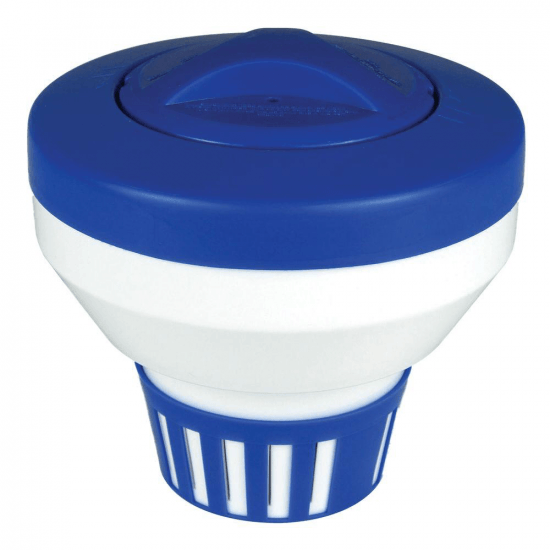
A chlorine dispenser, used as a visual marker in memorizing chlorate.
He was always yelling at me not to play with it or get close to it, because I think he was afraid of what would happen if I “ate” the chlorine. Inside of this chlorine dispenser, I’m picturing 3 little balls, which are in the place where my dad used to put the chlorine tabs… but these aren’t chlorine tabs – they’re clear, and they look different. That’s because these are the 3 oxygen atoms.
Now, I just need to place this complex visual symbol in a logical place in my memory palace. Depending on what I need to memorize this information for, I might do it differently. If I need to group them by alphabetical order, I might create a linear journey through my memory palace, and then memorize the entire list of polyatomic ions, in order, placing one symbol on every major piece of furniture, window sill, or doorway along my linear journey.
On the other hand, if I just need to memorize the list, and don’t care too much about where they go, I might put things in a “logical” place that reinforces the visual symbol by leveraging a pre-existing memory… for example, putting this chlorine dispenser into my childhood pool. Another way to do it would be to pick a room or area in my memory palace for specific letters of the alphabet, for example, putting all polyatomic ions that start with “C” or K into the Kitchen, and putting all polyatomic ions that start with “B” into the master Bedroom.
For now, I think I’m going to keep the chlorine dispenser in the pool where I won’t forget it, or it’s 3 little oxygen atoms. Anyways, I don’t need to know them in alphabetical order. Plus, because I now know chlorate, I can either choose to make additional memorable symbols for chloride, hypochlorite, perchlorate, and so on, or just use the easy-to-follow rules about adding and removing oxygen atoms based on their name. I’ve already memorized 5 polyatomic ions, with just one visual symbol!
The power of using pre-existing knowledge
Let’s give it another go, by memorizing Nitrate. In this situation, I’m going to lean on a piece of pre-existing knowledge about a specific memory I have from years ago, when I learned about “nitrates.” At the time, the girl I was dating was telling me why I should stop eating lunch meat – because it’s full of nitrates! I might picture myself with 3 round slices of delicious deli ham sticking out of my mouth, except instead of being pink and normal, they’re clear – because they are the 3 oxygen atoms in nitrate.
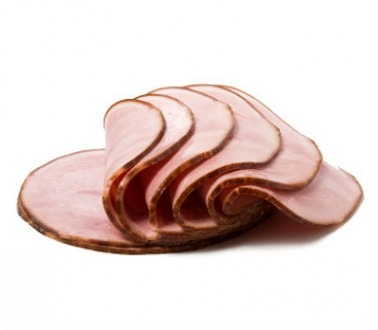
Deli ham slices, used as a marker for Nitrate.
For the sake of logic, I’m going to put this in the refrigerator of the same childhood house where the pool and the chlorine dispenser are. Now, using the same naming rules as before, I now know how to write the formulas for nitrite and nitride – and I might just create another visual symbol for remembering why hyponitrite and pernitrate are special exceptions.
This strategy will take you very far, allowing you to easily memorize the “basic” polyatomic ions in minutes – from sulfate to phosphate and even cyanide – which I remember by picturing a mysterious Chinese spy – CN – chewing on a negatively charged cyanide pill after getting caught.
But what about the more complex polyatomic ions?
Ones like Citrate, whose formula is C6H5O7 3−?
For this, we’ll use an even more advanced formula of creating compound visual markers within the stations of our memory palace – in other words, using individual details of the visualized images to add details within one visualization. Think of it a bit like compressing more information into one symbol.
Here’s how I’d do it… try visualizing it with me as I go along.
C6, for me, brings up a particularly sexy and exciting image of a Corvette C6. In that Corvette, a beautiful model is driving by a crowd of adoring fans, giving everyone a High 5. Now, remember how I said that obscene, often sexual imagery works better than any other kind? Well, as she drives by her fans, 7 people in the audience spontaneously experience… you guessed it… a big “O!” The police see this, and understand that it’s completely inappropriate in public, and so they give her -3 points on her driving record.
Now, you might be wondering – how am I remembering that it is 7 people who have that awkward O? Simple… I’m picturing that there are 4 on one side of the car and 3 on the other one. How about the -3 points? Why did I choose that visualization? Well, because I’m relying on pre-existing knowledge that I learned during a particularly unpleasant interaction with a police officer when I was speeding, whereby I learned that the maximum number of points you can get in California for any traffic offense is 3 at a time.
You see, not only is my visual marker extremely bizarre and memorable, but more importantly, it borrows from images and visualizations that I personally already know – such as the design of a C6 Corvette – which have emotional meaning to me – such as the number of points I can get if I drive too fast. I leverage the types of visualizations and associations that come naturally to me, such as picturing High 5’s for H5, and I don’t shy away from using inappropriate or nasty images, such as people in the crowd having a very lude response to their High-5.
But wait! Now that I know the formula of this polyatomic ion… how do I remember the name? Well, that’s an easy one, too. I just think of whatever comes to mind when I think of Citrate, for example, a Citrus fruit on my friend Nate’s head, and I put him in the passenger seat of the Corvette… an accessory to the crime!
Or, I could rely on another form of pre-existing knowledge, if I have one. For example, I happen to know that the magnesium supplement I like (which coincidentally comes in citrus flavor), contains magnesium citrate. So, to remember that this is the visual symbol for citrate, I might just put the logo of the brand that makes it, Natural Calm, all over the outside of the Corvette, in the same way that Formula 1 cars have logos plastered all over them.
In Conclusion
I know it sounds complicated, but with a little bit of practice, creating these types of creative, complex visual symbols can become second nature. By doing so, I can memorize each polyatomic ion (or anything else, for that matter) in a matter of seconds – placing that compound visual image into the appropriate place in my memory palace, and moving on to the next one. In time, this becomes as quick and easy as snapping your fingers!
And the best part? You will be able to cut your review time by as much as 80%, because memorizing this way is not only a heck of a lot more fun, it’s also way more memorable. Instead of trying to memorize a deck of boring flashcards by repeating them over and over and over again, you can imagine yourself walking through one of your favorite places, picturing lude models driving sports cars, protective ex-girlfriends slapping lunch meat out of your hand, and dangerous chlorine dispensers with oxygen atoms inside of them.
Now you try it. I’d love it if you took a moment to name a polyatomic ion in the comments, and share what you might visualize in order to remember it’s formula. It’s much easier than you think!
Now, I realize that this has been a pretty intense and fast-paced introduction to the rich world of memory enhancement and mnemonic techniques, so if you still a little confused, intrigued, or just want to learn more about how to leverage these techniques, I want to encourage you to not just subscribe to our channel and hit the “bell” icon, but also, check out this completely free, 1 hour training session, where I’ll go into a bit more of the neuroscience behind how and why this stuff works, with plenty more examples of how you can use it in your day to day life.

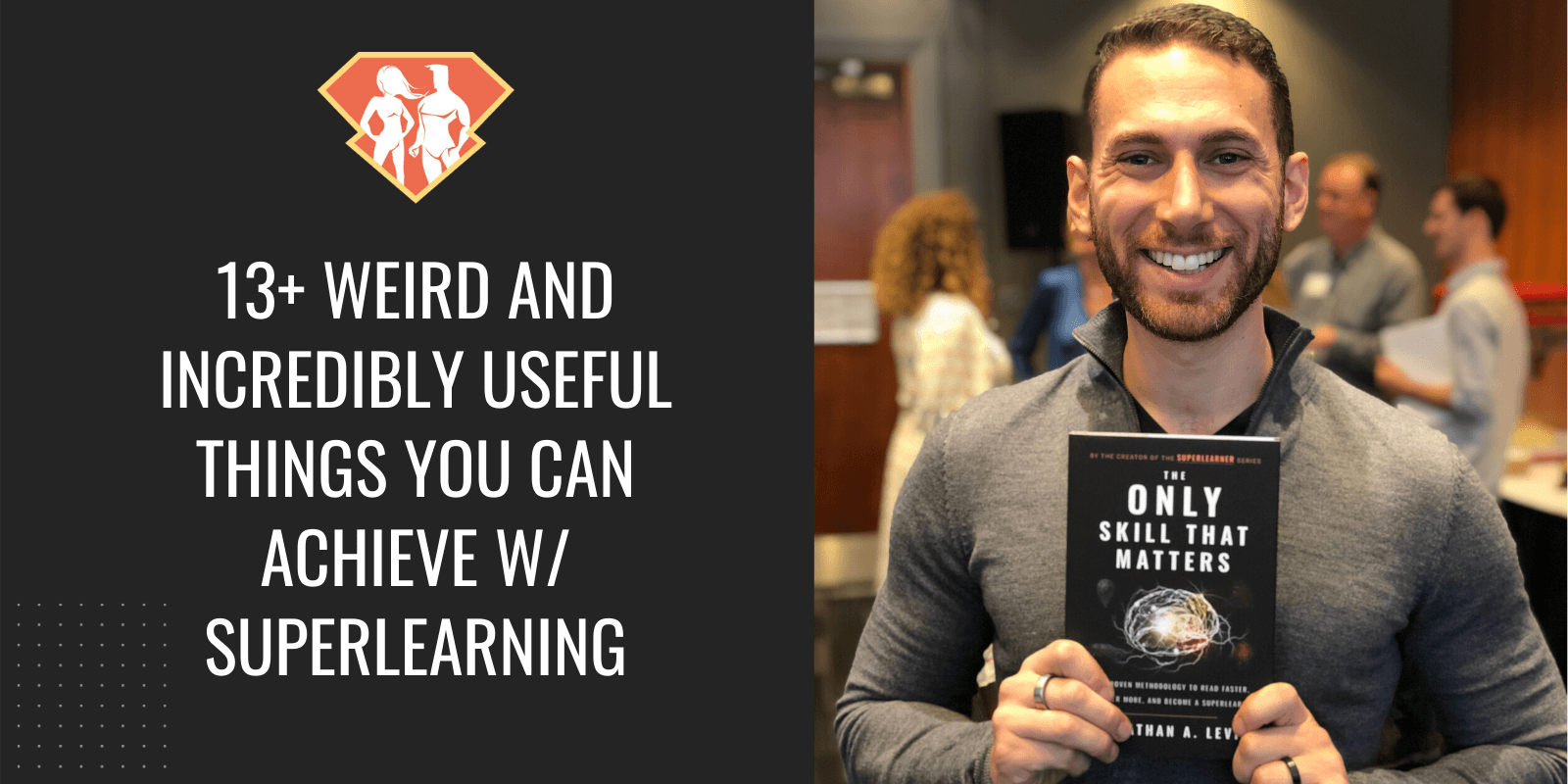


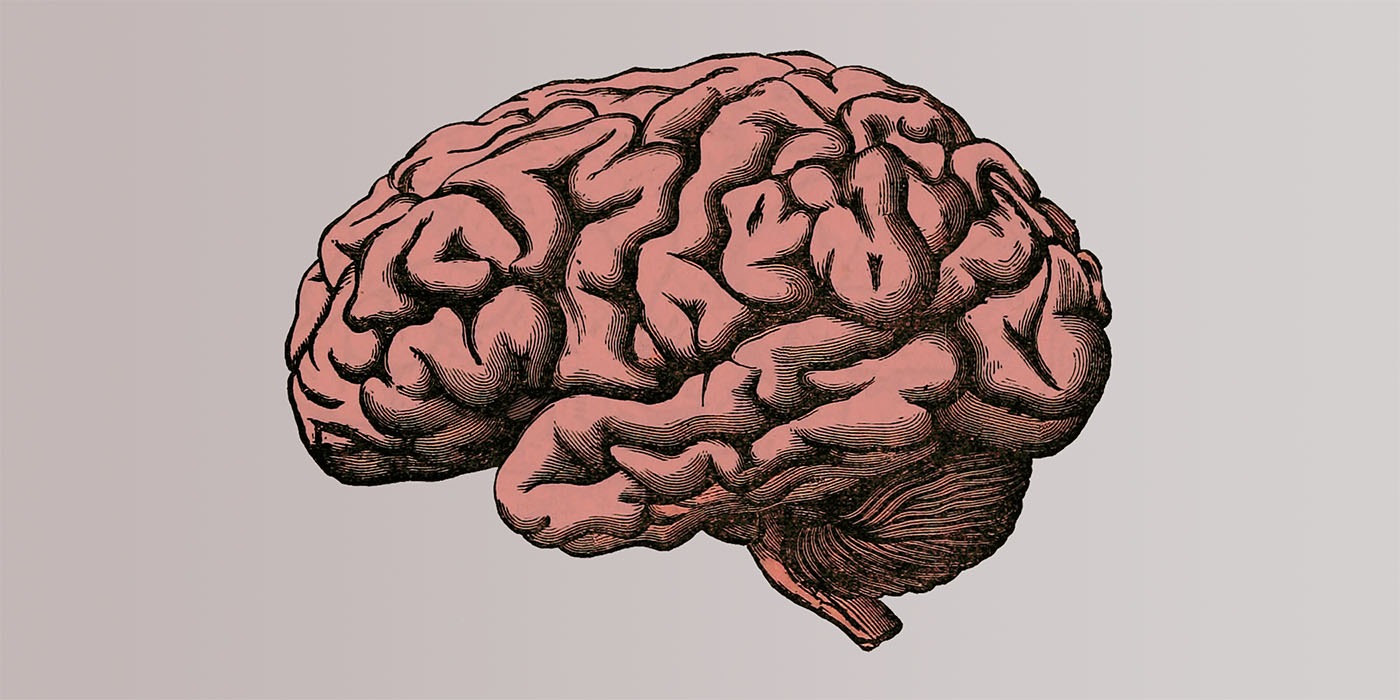

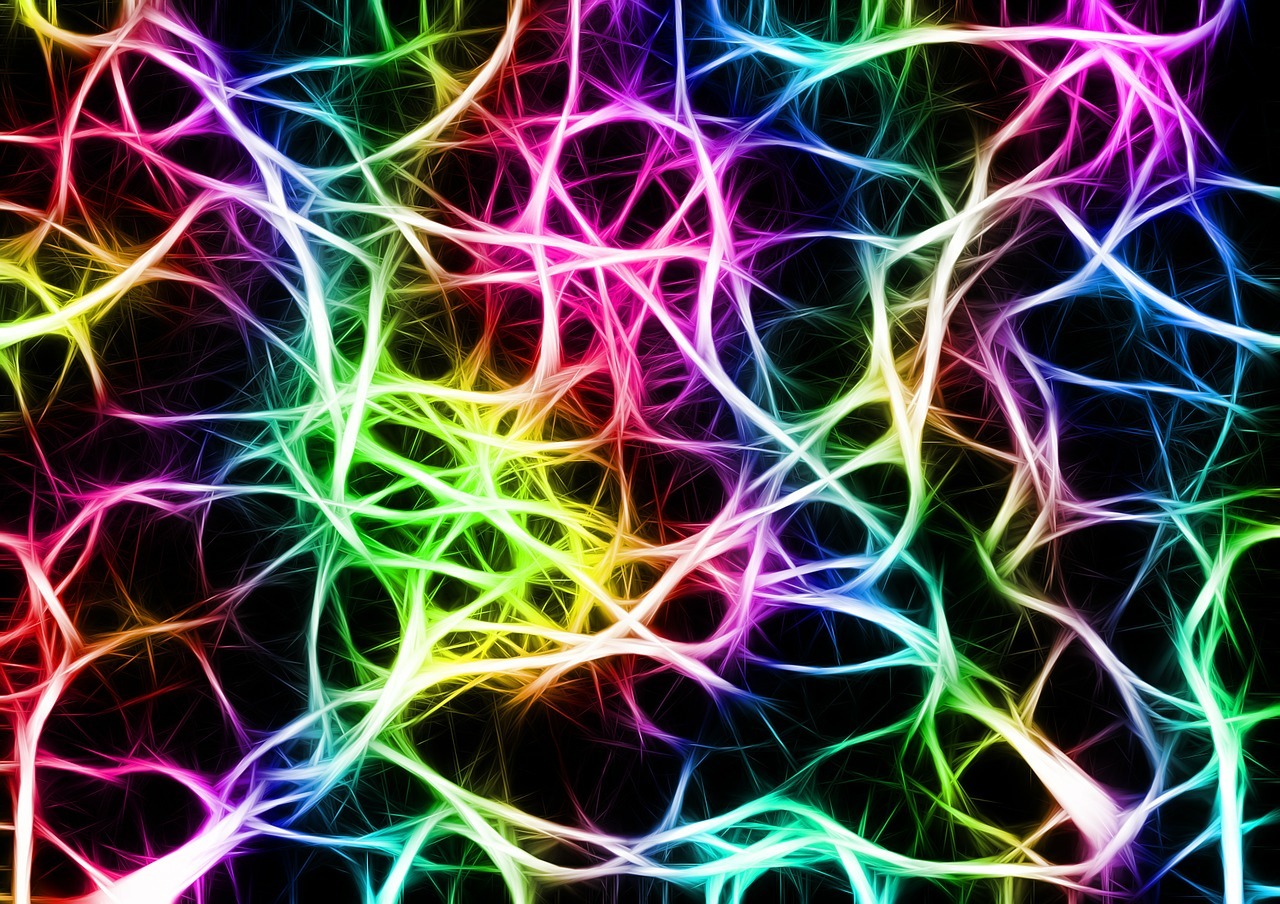
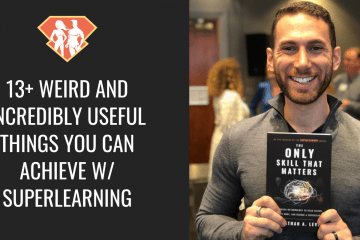


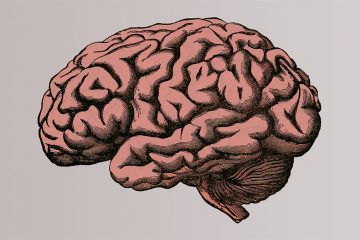
No Comment